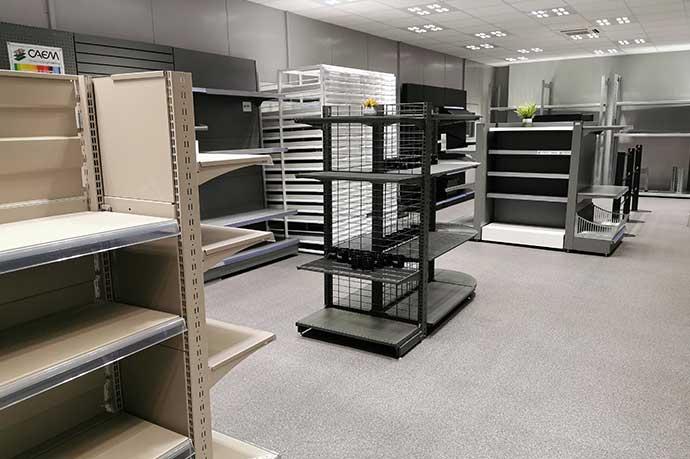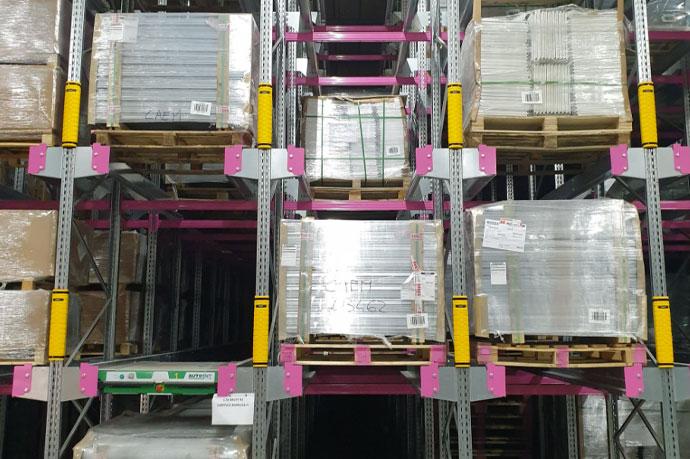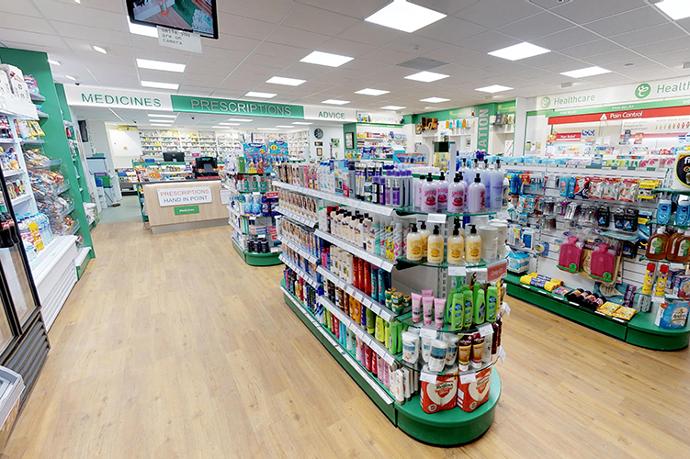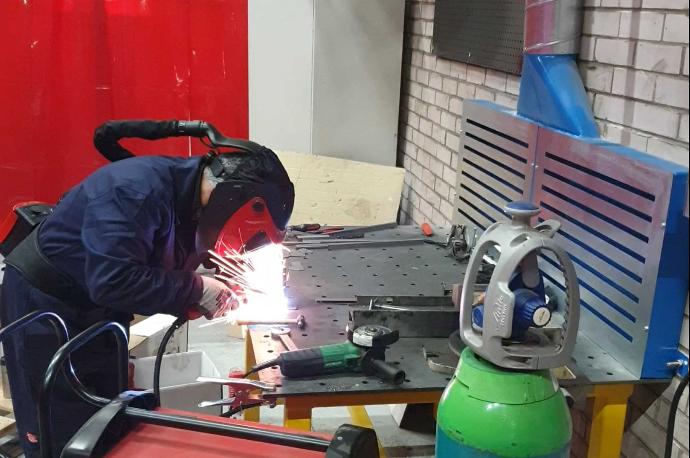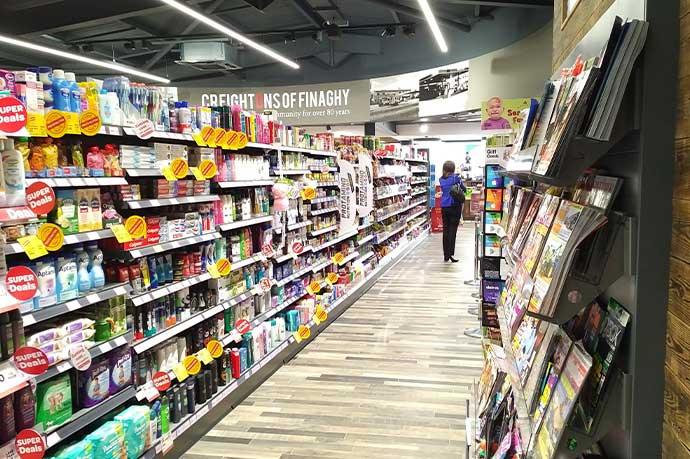https://www.caem.co.uk/dk9-customizable-modular-desks
In today's hybrid work environment, where flexibility between office and remote settings is the norm, selecting the right office desk has become crucial for both productivity and wellbeing. The global market for ergonomic office chairs has grown significantly, from £13.08 billion in 2023 to £13.81 billion in 2024, reflecting the increasing awareness of workspace health. Research shows that thoughtfully designed workspaces directly improve worker productivity and satisfaction, with companies implementing ergonomic solutions reporting fewer complaints of discomfort and fatigue, contributing to greater output and higher employee morale. Whether you're configuring a home office or revamping your corporate workspace, the right desk serves as the foundation of an efficient, comfortable, and productive environment.
Effective Office Desk Solutions for Every Workspace
Understanding the Importance of the Right Desk
Selecting the appropriate office desk goes beyond aesthetics—it's a critical investment in health and productivity. A desk that aligns with ergonomic standards supports proper posture, significantly reducing the risk of musculoskeletal disorders. The introduction of ergonomic furniture is linked to a notable decline in work-related musculoskeletal disorders and injuries, leading to fewer health claims and reduced absenteeism.
At CAEM, we've observed that desks accommodating both sitting and standing positions provide essential flexibility for modern workers. Our height-adjustable solutions allow users to change positions throughout the day, preventing the negative health impacts of prolonged sitting while maintaining workflow consistency.
How to Choose the Best Office Desk for Your Needs
Choosing the optimal desk requires systematic evaluation of several key factors. Start by assessing available space and specific work requirements—whether you need collaborative space, dedicated focus areas, or technology integration capabilities.
UK workplaces must consider British Standards compliance, particularly BS EN 527-1, which specifies that rectangular desks should not be less than 1200mm wide × 800mm deep, with 1600mm × 800mm recommended for optimal workspace. When planning office layouts, maintain a minimum of 800mm clearance behind desks, with 1000mm recommended for shared pathways to comply with UK spacing regulations.
Material selection should balance durability, aesthetics, and sustainability, while integrated features like cable management systems and adjustable components enhance functionality. Through our consultations with clients across various industries, we've found that involving end-users in the selection process significantly increases satisfaction with the chosen solutions.
Types of Office Desks and Their Uses
Efficient Desks for Collaborative Workspaces
Collaborative environments require desks that facilitate teamwork while adapting to changing needs. Modular desk systems have surged in popularity, with UK offices increasingly adopting designs that can transform between different configurations to support various team activities.
These flexible solutions feature easy reconfiguration capabilities, ample surface area for shared projects, and integrated technology supports. CAEM's collaborative desk ranges incorporate power access points, shared storage options, and configurations that promote eye contact and communication while maintaining personal workspace boundaries.
Ergonomic Desks for Healthier Work Environments
Ergonomic desks form the cornerstone of a health-conscious office environment. With the accelerated adoption of ergonomic furniture due to hybrid work models, companies are increasingly providing or subsidizing ergonomic furniture for remote employees, reflecting broader organizational commitment to worker wellbeing.
Modern ergonomic desks feature height adjustability (complying with BS 6396 guidelines requiring adequate height adjustment ranges), curved edge designs to reduce contact stress, and cable management systems that prevent trip hazards. These features work together to maintain proper posture, reduce strain, and support sustained productivity throughout the workday.
Executive Desks for Professional Settings
Executive desks communicate professionalism while providing comprehensive functionality for leadership roles. Characterized by premium materials and sophisticated designs, these desks offer expanded work surfaces and integrated storage solutions that support complex decision-making activities.
In the UK market, we're seeing increased demand for executive desks that balance traditional gravitas with modern functionality—incorporating discreet technology integration while maintaining classic design elements. These desks create a focal point in the office that reflects organizational values and leadership presence.
Practical Desks With Built-In Storage
Storage-integrated desks offer practical solutions for maximizing limited office space. These designs incorporate drawers, shelving, and compartments that keep essential items accessible while maintaining a clean workspace. For UK offices where space efficiency is often paramount, these solutions help maintain compliance with the BS5588 fire regulations requiring at least 60cm between the desk edge and the back of the user's chair.
Our storage-integrated designs feature customizable configurations that adapt to specific organizational needs, whether housing reference materials, technology peripherals, or personal items. The most effective solutions maintain clean sightlines while providing substantial storage capacity.
Dynamic Desks for Meeting Rooms
Meeting spaces require desks that support flexible collaboration, technology integration, and space optimization. With the emergence of activity-based workspace solutions in UK offices, meeting room desks now incorporate features like embedded charging stations, cable management channels, and modular components that reconfigure for different meeting types.
Successful meeting room desks balance durability with adaptability, supporting everything from quick stand-up briefings to extended planning sessions. The most effective designs maintain consistent aesthetic elements that align with the broader office environment while serving specific collaborative functions.
Personalised Home Office Desks
The rise of hybrid work has elevated home office requirements, with employees seeking personalized solutions that balance professional functionality with home integration. When selecting home office desks, factors like available space, aesthetic alignment with home decor, and ergonomic requirements take precedence.
Successful home office implementations often feature desks with adjustable components, integrated technology support, and design elements that transition smoothly between work and personal contexts. As remote work becomes permanent for many UK professionals, investing in quality home office furniture has shifted from a temporary solution to a long-term necessity.
Office Desk Features to Enhance Productivity
Adjustable Height Desks: Sit & Stand Benefits
Height-adjustable desks have become essential in contemporary office environments, addressing health concerns associated with sedentary work patterns. The market for these solutions continues to grow as research confirms their benefits for posture, circulation, and energy levels.
These desks support the emerging trend of smart technology integration in office furniture, with advanced models featuring programmable height settings, position reminders, and even health tracking capabilities. UK employers increasingly view these solutions as investments in long-term employee wellbeing and productivity rather than premium furniture options.
Desk Shapes and Sizes for Optimised Space
Thoughtful desk shape selection significantly impacts space efficiency and workflow effectiveness. L-shaped configurations maximize corner spaces, while bench-style arrangements optimize floorplan density in open offices. When planning layouts, adhering to UK space planning requirements is essential—maintaining the recommended minimum distance of 200cm between desk edges for back-to-back arrangements.
For wheelchair accessibility, UK standards require a minimum of 90cm between desks, ensuring inclusive workplace design. Our space planning specialists work with clients to balance density requirements with accessibility and comfort, creating environments that support diverse working styles while maximizing available space.
Material and Colour Selection for Office Aesthetics
Material and color choices significantly impact workspace atmosphere, durability, and sustainability profile. Contemporary UK offices increasingly select recycled or responsibly sourced materials that minimize environmental impact, reflecting corporate environmental goals and employee values.
Warm wood tones continue to dominate traditional settings, while composite surfaces offer durability in high-traffic areas. Color selection influences psychological responses—blues and greens promoting focus, while accent colors create visual interest and reinforce brand identity. The most successful implementations balance aesthetic considerations with practical requirements like stain resistance, durability, and maintenance needs.
Advanced Cable Management Solutions
Effective cable management has evolved from an aesthetic preference to an essential productivity feature. Modern desk designs incorporate channels, ports, and compartments that organize power and data cables while maintaining clean sightlines.
Beyond visual benefits, these systems support compliance with UK workplace safety regulations by eliminating trip hazards and preventing cable damage. Our integrated solutions feature access points positioned for convenient connectivity, removable covers for reconfiguration, and capacity planning that accommodates future technology needs.
Integrating Technology: Desks with USB Ports and Wireless Chargers
Technology integration represents one of the most significant office desk innovations of 2023-2024. Modern desk systems now feature built-in wireless charging capabilities, eliminating cable clutter while ensuring devices remain powered throughout the workday.
Beyond charging capabilities, advanced desks incorporate connectivity hubs, display mounting systems, and cable routing designed for specific technology ecosystems. These features reduce setup time, minimize connectivity frustrations, and create a more seamless experience as employees transition between different work locations.
Enhancing Workspaces with Desk Accessories
Essential Desk Organisers
Strategic desk organization significantly impacts workflow efficiency and cognitive focus. Effective organizational accessories provide designated spaces for frequently used items while maintaining clean sightlines and reducing search time.
Our workspace consultants recommend systems that match actual workflow requirements rather than generic solutions—vertical organizers for reference materials, drawer dividers for small items, and desktop sorters for active projects. The most effective organization systems remain flexible, adapting as project requirements and work patterns evolve.
Ergonomic Chair Pairings
The desk-chair relationship forms the foundation of ergonomic workspace design. With the ergonomic office chair market projected to reach £17.22 billion by 2028, selecting complementary components has become increasingly sophisticated.
When pairing chairs with desks, consider height compatibility, armrest clearance, and movement patterns. Chairs should allow users to maintain proper posture with feet flat on the floor, arms at right angles, and screens at eye level. Our ergonomic assessments consider individual physical requirements, task types, and duration of use to recommend optimal pairings that support sustained comfort and productivity.
Lighting Options for Focused Work
Proper lighting significantly impacts visual comfort, energy levels, and work accuracy. Task lighting should complement ambient illumination, eliminating shadows and reducing contrast that contributes to eye strain.
Adjustable desk lamps with color temperature control allow customization based on task requirements and time of day. Position lighting to minimize screen glare while providing sufficient illumination for physical documents and writing tasks. Our workspace design team incorporates lighting plans that balance energy efficiency, visual comfort, and aesthetic integration.
Personalisation Tips for a Cohesive Look
Personalization balances individual expression with professional cohesion. Successful personalization strategies establish parameters that maintain brand identity while allowing meaningful customization.
Consider defined personalization zones on or around desks, consistent organizational systems with personal selection options, and customizable elements like desk surfaces or privacy screens. These approaches maintain visual consistency while supporting individual preferences and working styles, creating environments that feel both professional and personally meaningful.
Case Studies: Real-Life Office Desk Transformations
Small Office Design Success Stories
A London-based financial consultancy with 18 employees faced significant space constraints in their 800-square-foot office. Working with CAEM, they implemented our compact height-adjustable desks with integrated storage and cable management systems, transforming their cramped environment into an efficient workspace.
The solution included:
- Desks designed specifically to maximize their irregular floor plan, with custom sizes complying with BS EN 527-1 standards
- Integrated power management systems eliminating floor cables and adapters
- Storage components tailored to their document management workflow
The result was a 30% increase in usable workspace and significantly improved employee satisfaction, with 92% of staff reporting enhanced comfort and productivity in post-implementation surveys.
Corporate Office Overhauls
A major UK technology firm with 200+ employees undertook a complete workspace transformation when transitioning to a hybrid work model. The company partnered with CAEM to develop desk solutions supporting both collaborative and focused work while reducing their overall real estate footprint.
The implementation featured:
- Modular desk systems that reconfigure for different team sizes and project requirements
- Technology-integrated workstations with wireless charging capabilities and adaptive connectivity
- Neighborhood-based layouts replacing traditional assigned seating
After implementation, the company documented a 24% reduction in space requirements while accommodating the same workforce, 35% increase in cross-team collaboration, and significant improvements in employee satisfaction metrics. The desk solutions played a central role in facilitating their new working model, demonstrating how thoughtful furniture selection supports broader organizational change.
Buying Guide: How to Choose An Office Desk Provider
Key Considerations When Choosing a Desk Supplier
Selecting the right office desk supplier requires evaluating several critical factors. Beyond price comparisons, assess product quality through material specifications, construction methods, and warranty terms. UK businesses should verify compliance with British Standards, particularly BS EN 527-1 for desk dimensions and BS 6396 for workstation design.
Evaluate supplier reliability through client references, project timelines, and stock availability. The most effective suppliers demonstrate design expertise through consultation processes that address specific organizational needs rather than promoting standard solutions. Additional services like space planning, installation coordination, and ongoing support provide significant value beyond the furniture itself.
Benefits of Choosing Comprehensive Office Solutions
Integrated office solutions provide substantial advantages over piecemeal procurement. Comprehensive providers offer coordinated aesthetics across furniture categories, simplified procurement through single-source relationships, and integrated design addressing workflows rather than individual products.
Working with providers offering full workspace solutions ensures compatibility between components, coordinated delivery and implementation, and consistent quality standards. This approach reduces management complexity while creating more cohesive environments.
Top Providers in the UK Market
The UK office furniture market features several distinguished providers, each offering unique strengths. While CAEM specializes in customized workspace solutions with particular expertise in technology integration and space optimization, the broader market includes specialists in sustainability, ergonomics, and traditional craftsmanship.
When evaluating providers, look beyond product catalogs to assess consultation processes, implementation capabilities, and ongoing support. The most valuable partnerships combine product quality with expertise that addresses your specific organizational challenges, creating solutions tailored to your unique requirements.
Customisation and Sustainability in Office Desks
Options for Customised Desks
Customization has evolved from a premium option to an expected capability in the UK office furniture market. Modern customization extends beyond aesthetics to include dimensional adjustments, component configurations, and technology integration tailored to specific requirements.
Effective customization processes balance flexibility with practical constraints—identifying which elements provide meaningful value while maintaining reasonable delivery timelines. Our approach focuses on understanding workflow requirements, space constraints, and cultural factors that influence furniture functionality, developing solutions that address specific challenges rather than applying generic templates.
Sustainable Materials and Eco-Friendly Choices
Sustainability has become a central consideration in office furniture selection. The market has responded with expanded material options including bamboo, FSC-certified wood, rubberwood, and recycled materials that minimize environmental impact.
Beyond materials, look for manufacturing processes that reduce waste and energy consumption, regional production that minimizes transportation impacts, and designs supporting disassembly and component recycling. The most advanced sustainable solutions maintain performance and aesthetic standards while significantly reducing environmental footprint—demonstrating that responsibility and quality can coexist.
Maintenance Tips for Longevity of Office Desks
Cleaning and Upkeep Practices
Proper maintenance significantly extends furniture lifespan while maintaining appearance and functionality. Develop cleaning protocols based on specific materials—using appropriate cleaners for wood, laminate, glass, and metal components to prevent damage.
Preventive measures like desk mats, coasters, and felt pads protect surfaces from wear, while regular inspection identifies minor issues before they require significant intervention. Our maintenance guidelines provide material-specific recommendations for daily care, periodic maintenance, and addressing common issues specific to each desk type.
Troubleshooting Common Issues
Addressing common desk issues promptly prevents minor problems from escalating. For adjustable components, regular lubrication and mechanism testing maintain smooth operation. Loose connections should be tightened according to manufacturer specifications without overtightening that might damage components.
Surface damage requires material-specific remediation—minor scratches in wood surfaces may respond to touch-up markers or paste wax, while laminate chips might need professional repair. Our support team provides guidance for assessing whether issues can be addressed through simple maintenance or require professional intervention.
FAQs About Office Desk Solutions
What Size Desk Do I Need?
Desk size requirements vary based on work type, available space, and individual preferences. For standard office work, follow UK standards recommending rectangular desks not be less than 1200mm wide × 800mm deep, with 1600mm × 800mm optimal for most users.
Consider specific task requirements—multiple monitors, reference materials, or collaborative activities may necessitate larger surfaces, while limited spaces might require compact solutions with vertical organization. Allow adequate clearance around the desk, with at least 800mm behind for movement and sufficient side clearance for accessibility, particularly the 90cm minimum required for wheelchair access under UK regulations.
How Often Should I Replace My Office Desk?
Quality office desks typically last 7-15 years, though functional lifespan varies based on construction quality, usage patterns, and maintenance practices. Rather than calendar-based replacement, evaluate desks for specific indicators suggesting replacement needs.
Structural integrity issues like wobbling, fractures, or hardware failures present safety concerns requiring immediate attention. Functional obsolescence occurs when desks no longer support current technology or work patterns, while significant appearance deterioration may affect professional image. Consider both repair costs versus replacement value and the potential productivity benefits of updated designs when making replacement decisions.
Final Thoughts: Invest in Your Workspace for Better Productivity
The Future of Office Desk Solutions
The office desk continues to evolve rapidly, with several significant trends shaping future development. Smart integration technology, including wireless charging capabilities and AI-driven personalized adjustments, is becoming standard rather than premium features.
Adaptable modular designs continue gaining prominence, allowing offices to reconfigure based on daily needs and occupancy patterns. Wellness-focused designs extend beyond basic ergonomics to incorporate materials and features supporting overall wellbeing. These innovations reflect fundamental shifts in work patterns, with furniture adapting to support distributed teams, technology-mediated collaboration, and flexible attendance models.
How to Stay Updated with Latest Trends
Remaining current with office furniture developments requires ongoing engagement with information sources and industry connections. Industry publications provide insights into emerging trends, while trade shows offer hands-on experience with new products.
Professional networks facilitate knowledge sharing about implementation experiences and performance outcomes. Consultation with workspace specialists provides contextual guidance for applying broader trends to specific organizational requirements. By maintaining awareness of evolving options while focusing on fundamental principles of ergonomics, functionality, and quality, organizations can create environments that support current needs while adapting to future developments.
